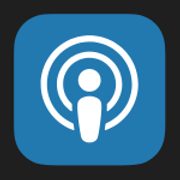Table of Contents

1. Why the Owner’s Utility Lens Matters
Before you ever ask what your company is worth to a buyer, you need to ask:
What is this business actually worth to me?
That’s the Owner’s Utility Lens. It’s your personal ROI — the measure of what the business delivers in three forms:
Time – How much of your life you get back (or lose) because of the business.
Cash Flow – How much money actually makes it into your pocket, not just on paper.
Wealth – The long-term equity you’re building that could one day be transferred or monetized.
Most owners struggle to see the whole picture. They’re caught in a loop of questions every owner knows too well:
How much money will I actually take home next year?
If I step back, will this thing still run without me?
Should I reinvest or take distributions?
If someone offered me $10M, should I take it — or will I regret it if I don’t?
These aren’t abstract questions. They shape how you spend your time, the risks you take, and the stress you carry.
The truth is, every strategic choice you make—how much to reinvest, how much to take out, how much of your time to give—is already a valuation decision.
If you don’t define your Owner’s Utility Value, the business ends up defining it for you.
1. The “Growth for Growth’s Sake” Trap
Some owners pour everything—time, cash, and energy—back into the business, chasing growth as a proxy for freedom.
“If we just get to $10M, it’ll all get easier.”
“We’ll finally hire that person next year.”
“This new product could be the one that changes everything.”
But without the Owner’s Utility Lens, they can’t see the whole picture. They’re making decisions in the dark, hoping that if they grind hard enough, freedom will magically appear.
The reality: growth is expensive. It eats cash. It adds complexity. And it often traps you deeper in the very job you’re trying to escape.
It’s like a never-ending customer survey. You finish one page, only to see another. And another. You want to quit, but you keep clicking, thinking maybe, just maybe, the next one will be the last.
This is how owners burn themselves out—investing everything into a machine they don’t fully understand, with no visibility into when (or whether) it will ever pay them back.
2. The “I Deserve It” Entitlement Trap
On the flip side, some owners have been grinding for 15+ years and are exhausted from feeling like a hostage to their own company.
“I’ve taken all the risk—this business owes me.”
So they pull as much cash out as possible. They hold onto every major decision. They insert themselves into sales, ops, and finance because they don’t trust anyone else to do it “right.”
But in starving the company of what it needs to grow, they trap themselves further.
Then comes the shock: when they’re finally ready to “punch out,” the business isn’t worth what they thought it was. They confuse personal income with equity value.
The truth? Buyers don’t want to pay for the luxury of a high-paying job. They want a machine that runs without the owner. And that’s not what’s been built.
Why These Traps Matter
Both traps come from the same blind spot: running your business without a clear Owner’s Utility Lens.
Without clarity, you either:
Over-invest in growth and sacrifice today for a future that may never come.
Or over-extract from the business and sacrifice the future for comfort today.
The key is balance. The Owner’s Utility Lens forces you to quantify what the business must deliver in time, cash, and wealth so you can avoid both extremes and make intentional trade-offs.
2. The Flywheel: Time, Cash Flow, and Wealth
At the heart of the Owner’s Utility Lens is a simple truth: Your business is either giving you freedom or taking it away.
Freedom comes from alignment across three levers:
Time – How much of your life you get back (or lose) because of the business.
Cash Flow – How much income you can reliably take home, and in what form.
Wealth – The long-term equity you’re building that could one day give you options.

Together, these three levers form the Independence Flywheel™. It’s not a fluffy consulting framework. It’s the real engine behind your personal freedom. How you balance and optimize them determines whether you stay stuck… or move toward Independence Escape Velocity™.
At the center of the Flywheel is the prize: control of your time, income, and equity without being trapped in the business you built.

Let’s break it down:
Time: Your Role and How You Spend It
Time is the most limited—and most misallocated—resource owners have.
Every week, you’re spending time in two roles:
Your Job: The W-2 role inside the business — solving problems, managing people, making sales, keeping things running.
Your Ownership Role: The investor’s seat — setting direction, allocating capital, and shaping the company’s future.
If you’re like most owner-operators, your time is trapped inside the job. That means all your income depends on your continued effort, and your decisions are reactive, not strategic.
Defining how much time you want to spend in the business—and building a clear path to get there—is the starting point of independence.
Cash Flow: What You Take Home and Why It Matters
Cash flow is the scoreboard of your effort. But you’re not just “getting paid.” You’re paid in two distinct ways:
Salary + Bonus — compensation for the job you perform.
Distributions — return on the capital you’ve invested as an owner.
The balance between these two is everything. Salary keeps the lights on. Distributions build optionality.
If you don’t understand where your income is coming from or how it will shift as the business evolves, you’ll keep guessing when to reinvest, when to distribute, and whether you’re on track.
Wealth: What You’re Building and Why It Matters
Wealth isn’t theoretical. It’s what you own, what it’s worth, and whether it’s transferable.
That includes:
The equity value of your business
Other assets (real estate, investments, etc.)
Your ability to convert wealth into income when you need it
For most owners, the business is their single largest asset. But unless it can run without you, buyers see a job, not an asset. Wealth only matters if it’s transferable.
Why the Flywheel Matters
Time, cash flow, and wealth don’t exist in isolation. They spin together.
Chase income today and you may sacrifice equity tomorrow.
Reinvest for growth and you may burn yourself out on time.
Build equity value but never access it, and you may look rich on paper while living broke.
The Owner’s Utility Lens forces you to see all three at once. It strips away gut feelings and replaces them with measurable trade-offs:
Where are you spending your time?
What cash flow do you need to support your life?
How do those decisions impact the business’s future market value (Lens 2)?
When you answer those questions clearly, you stop making reactive, gut-based decisions. You start allocating time and money like a true investor — with confidence, clarity, and purpose.
3. Forecasting Clarity: Seeing Your Future as an Owner
Once you understand the Owner’s Utility Lens — time, cash flow, and wealth — the next question is: How do you actually see it?
Most owners don’t have visibility into their future. They see last month’s P&L, maybe their bank balance, and then make decisions from the gut. That’s not ownership. That’s reaction.
Without a forecast, it’s impossible to answer questions like:
Can I step back from the business in the next 3 years?
Will I be able to maintain a $500K income?
Am I on track to hit a $5M net worth by 2030?
Should I hire that next key executive… or hold off?
Do I take more distributions, or reinvest in growth?
If someone offered me $10M, should I take it?
These are not hypothetical. They are the questions that shape your time, your strategy, and your family’s future. And without clarity, most owners fall back on hope.
Why Owners Get Stuck
If you’ve ever said:
“We’re growing like crazy, but there’s no cash.”
“Our CPA says we’re profitable, but I don’t have money for taxes.”
“I don’t know how much I can pull out without cringing.”
That’s because you’re missing the full picture.
Half of owners don’t even have a budget. Almost none have a forward-looking financial model that goes beyond the income statement. That’s like driving a car by staring through the rear-view mirror.
4. The Power of a 3-Statement Model
The only way to see clearly is to build a forecast that ties all three financial statements together:
Income Statement – what the business will earn and spend.
Balance Sheet – what the business will own and owe.
Here’s the key: these statements are mathematically linked.
You input assumptions on operations, growth rates, margins, and expenses into the income statement.
You forecast the balance sheet with assumptions like:
DSO (Days Sales Outstanding): how fast you collect receivables.
DPO (Days Payables Outstanding): how fast you pay your bills.
DIO (Days Inventory Outstanding): how long inventory sits before it’s sold.
Plus CapEx, taxes, and owner distributions.
The cash flow statement then falls out naturally. It shows how money really moves through your business — and what’s left for you.

5. Why the Cash Flow Statement Matters
The P&L is where most owners stop. They see profit and assume cash will follow. But profit doesn’t equal cash — and cash is what you actually get to use.
The cash flow statement shows the truth:
Start with net income.
Adjust for working capital (timing of receivables, payables, inventory).
Subtract taxes.
Subtract debt service (principal + interest).
Subtract reinvestment (CapEx, growth initiatives).
What’s left is what you can actually distribute as an owner.
Add or subtract changes in cash to see how much ends up in the bank.
This is where the real trade-offs live.

Why This Is Critical
Hire faster? Working capital balloons, reducing available cash.
Pay down debt? Lowers future risk but reduces distributions today.
Reinvest in growth? Delays distributions now but may increase future equity value.
Every lever you pull as an owner shows up here. That’s why it’s the lens you can’t ignore.
The Owner’s Payoff
When you see the cash flow statement clearly, you finally know:
How much cash you can take home without starving the business.
How growth, debt, and reinvestment will affect your distributions.
What your equity is really worth when tied back to future cash flows.
6. The Power of Visibility: Salary vs. Distributions
The biggest blind spot I see? Owners don’t separate their job from their ownership.
W-2 Salary + Bonus: This lives on the income statement. It’s the cost of doing your job inside the company.
Owner Distributions: These live on the cash flow statement. They’re what’s left after working capital, taxes, debt payments, and reinvestment.
If you blend the two, you can’t tell whether your work or your assets fund your lifestyle.
That confusion leads to fear, bad decisions, and the traps we talked about earlier:
Growth for growth’s sake on one end, entitlement-driven cash grabs on the other.
But with a three-statement model, you can see the trade-offs in real time. You can see when, and how much, cash flow will be available to you via ownership distributions. You can see in the example below.
You’ll know when to buy your time back.
You’ll know what happens if you reinvest… or don’t.
You’ll stop operating on hope, and start making decisions based in confidence with clarity.
7. Thinking Like an Investor: Discounted Cash Flow (DCF)
Forecasting shows you what your future cash flows could look like. The next step is valuing them the way an investor would:
What is that stream of cash actually worth today?
That’s the job of a Discounted Cash Flow (DCF) analysis.
Step 1: Start with a Forecast

A forecast links together your income statement, balance sheet, and cash flow statement. It shows how revenue flows through operations, impacts working capital, and ultimately drives equity value.
This is where you get the first glimpse of how today’s choices will shape tomorrow’s wealth.
Step 2: Follow the Cash Flow Statement

The income statement tells you profit. But profit doesn’t equal cash. The cash flow statement shows the truth:
Start with net income.
Adjust for working capital (receivables, payables, inventory).
Subtract taxes.
Subtract debt service.
Subtract reinvestment (CapEx, growth).
What’s left is owner distributions.
Add or subtract changes in cash to see what actually lands in the bank.
This “distributions” line is what owners actually care about — and it’s the number we discount in a DCF.
Step 3: Discount the Future Distributions

Let’s say your forecast shows distributions of $500K in Year 1, scaling to $2M by Year 5.
That looks great on paper — but investors know those future dollars are risky. A dollar five years from now isn’t worth a dollar today.
That’s where the discount rate comes in. For a riskier small business, investors might require a 25% return. That means each future bar of cash flow gets pulled down in today’s terms.
In this example, the five years of distributions are worth $2.66M today.
Step 4: How the Discount Rate Is Calculated

So where does that 25% come from? Investors use the build-up method:
Risk-Free Rate – baseline return from U.S. Treasuries.
Equity Market Premium – extra return expected for stocks.
Size Premium – smaller companies are riskier.
Industry Premium – volatility in your sector.
Company-Specific Risk – the big lever you control: customer concentration, leadership depth, systems, culture, reporting.
For many owners, company-specific risk is the difference between a 25% discount rate and a 15% one — which can double enterprise value.
Step 5: Don’t Forget Terminal Value

DCF also includes the equity value at the end of the forecast.
Year 5 EBITDA = $4M
Exit Multiple = 5×
Terminal Value = $20M
But discounted at 25%, that $20M is only worth $6.55M today.
When you add it all up:
PV of distributions (2025–2029) = $2.66M
PV of terminal value = $6.55M
Total Equity Value Today = $9.2M
Step 6: Why Risk Matters
Here’s where things get real. Take two companies: Advanced Solutions and Rockin Times.
Both have $10M in sales and $1M in normalized EBITDA. But using a concept from 🎙️428: Ken Sanginario who identified eight functional areas of any company:
Advanced Solutions has poor planning, lumpy sales, weak culture, and no systems.
Rockin Times has strong leadership, disciplined planning, accurate financials, and repeatable processes.

Result:
Advanced Solutions has high company-specific risk → 25% discount rate.
Rockin Times has lower risk → 15% discount rate.
You can literally see the difference in the cash flow graphs: lumpy vs. smooth. Predictability lowers risk, and lower risk drives higher multiples.

The Payoff
When you add it all up, the DCF answers one question:
If I take out the owner distributions my business will generate over the next five years — and then sell it at the end — what is all of that worth in today’s dollars, given the risk of my company?
It’s not abstract. It’s the same math investors use every day.
And more importantly: it puts you back in control.
Because once you see risk this way, you can manage it, reduce it, and multiply your wealth.





